Ginger planting has made another brilliant move!
Ginger is a kind of vegetable and condiment liked by the broad masses of people. For many years, the majority of vegetable farmers in our land have been cultivated in the open field, and the yield is not very ideal. In recent years, we have successfully adopted plastic film mulching cultivation, and the yield can be increased by 20%. The cultivation techniques are introduced as follows:
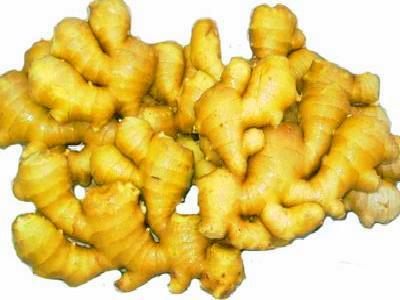
First, cultivate strong buds: take out ginger from the storage cellar 20-30 days before sowing, wash the soil off the ginger, lay it on the grass or clean ground to dry for 1-2 days, pay attention to moderation when drying, do not expose to the sun, if the sun is too strong, should be appropriate to use grass shade. Put the ginger indoors for 2-3 days, and cover the ginger with grass. At the same time, strict seed selection, elimination of thin and dry, flesh brown or soft ginger, select ginger hypertrophy, bright color, non-drying, non-decay, unfrozen, hard texture, no disease and insect harm of strong ginger as ginger. Then sprouting is an important technical measure for ginger production. There are many methods. The basic principle is to keep sprouting at 22-25 ℃ for 20-25 days to meet the sowing requirements, and the buds are full and stout. We can use the sun bed to promote sprouting, that is, in the shelter from the wind to the sun to build the sun bed, 0.6m deep, 1.2m wide, long according to the number of ginger, spread 10cm thick hay at the bottom and around, put the sun-dried ginger among them, the thickness of ginger is suitable for 30~35cm, cover 15cm thick hay on the pieces of ginger, keep dark and loose and breathable, and finally put on the arch, cover the plastic film, cover the grass curtain at night, and ensure the border temperature 20: 25 ℃. When sprouting, attention should be paid to the moisturizing of ginger seeds, and under the condition of ensuring air permeability, the thickness of the cover should be increased as much as possible to reduce water evaporation. The standard of bud acceleration is bud length 0.5~2.0cm and crude 0.5~1.0cm.
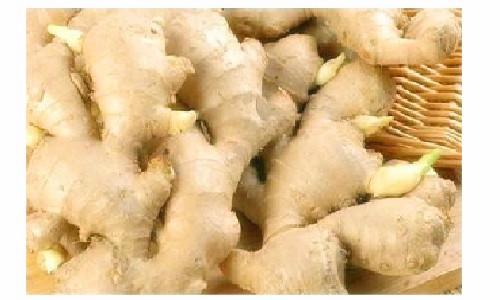
2. Application of basic fertilizer for soil preparation: select fertile loam with deep soil layer, rich organic matter, water and fertilizer conservation, irrigation and drainage, soft ventilation, slight acidity, deep turning over 30cm, 667m2 application of rotten organic fertilizer 5000kg, calcium superphosphate 50~75kg, leveling and raking fine, high border cultivation, 1.5m wide ditch, high 20cm, 3 rows of 10cm deep ditch on the border surface, and 3 rows of planting.
Third, sowing: the size of ginger seed block is about 50 to 75g, the seedling appears early, the ginger seedling grows vigorously, and the yield is high. If the seed block is too small, the seedling emergence is late, the seedling is weak, the yield per plant is low, and the marketability is poor. Only one short strong bud is left on each ginger seed, and the rest buds are all erased. When breaking ginger, it is found that the base of the bud or the cross section of the ginger block turns brown, which should be removed. Then the broken pieces of ginger were soaked in 250~500mg/kg 's ethephon solution and sowed immediately after being fished out, which could promote the branching of ginger plants, enhance the growth and increase the yield. When we adopt plastic film mulching cultivation, we can sow seeds in late March, which is more than one month earlier than that in the open field.
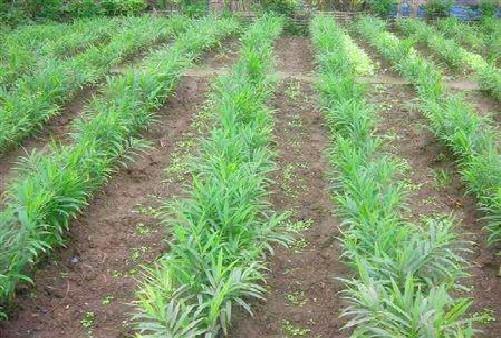
After sowing and covering the soil, 667m2 sprayed the water 20kg with 1kg herbicide ether on the ginger ditch and the surrounding ground while the soil was moist. The personnel reversed the operation when spraying, and kept the ground moist after spraying.
After sowing ginger, the 1.2m wide plastic film was tightened on the ridges on both sides of the ditch, the plastic film was pressed, and the distance between the bottom of the ditch and the upper film was kept 15cm. After the buds were unearthed, when the seedlings came into contact with the upper plastic film, the seedlings were drilled to draw out the seedlings, and the plastic film was removed in the middle and last ten days of May.
IV. Field management
1. Shading: ginger is not tolerant to strong light and high temperature. Shading should be carried out after removing the film in the middle and late May and removed in the first and middle of August. The method is to insert the thick bamboo pole of 2~3cm on both sides of the border, and then tie the horizontal bamboo pole at 1.7m to 2.0m above it and cover it with grass. You can also cover a shade net with a shading rate of 60% to 70%, and then fix it with a rope. Tall stalks or interplanting melons can also be inserted between rows for shading. Generally, 60% shading is more suitable, shading is not enough, the effect is reduced, the shading is too large, the plants grow too long, and the yield decreases greatly.
two。 Fertilizer and water management: watering sufficient bottom water before sowing, watering for the first time after sowing half a month, watering for the second time after 2-3 days, watering frequently at seedling stage, keeping soil moisture 65%-70%, watering in summer is appropriate in the morning and evening, pay attention to drainage after rainstorm, the Beginning of Autumn needs more water after entering the vigorous growth period, should be watered once in 4-6 days, and the soil relative humidity should be kept at 75%-80%.
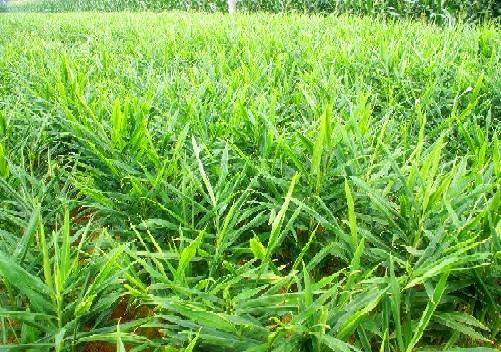
No topdressing was needed in the germination stage, seedling height 30cm, topdressing one strong seedling fertilizer at 1 branch, 667m2 applying ammonium sulfate or diammonium phosphate 20kg, the Beginning of Autumn combined with removing ginger shed and topdressing heavy fertilizer, this stage was ginger expansion stage, 667m2 applied cake fertilizer 75kg, compound fertilizer 50kg, combined with topdressing for the first time, and then combined with watering for the second and third times. In the middle of September, the fertilizer was topdressing and the compound fertilizer 25kg was applied to 667m2.
3. Prevention and control of diseases and insect pests: it is mainly ginger blast, which usually starts in July with high temperature and heavy rain. the disease is mainly controlled by comprehensive agricultural control, such as crop rotation, strict seed selection, etc., the diseased plants are pulled out in time when they are found in the field, and the healthy plants within 0.5m around the diseased plants are removed, the bacteria-carrying soil is dug up, and lime 1kg is scattered in and around the disease hole. And irrigate the root with 50% carbendazim 500x solution or 72% agricultural streptomycin sulfate soluble powder 30004000x solution, or 50% benzoylammonium 800x solution or 50%DT wettable powder 500x solution to prevent the disease from happening again.
4. Timely harvest
Harvesting ginger can be harvested at the same time as fresh ginger before the arrival of the first frost, or harvested in advance to the Beginning of Autumn. Early harvest is generally not advocated, because it is easy to cause germs to invade the wound, and fresh ginger is generally harvested in time in early November before the first frost.
- Prev
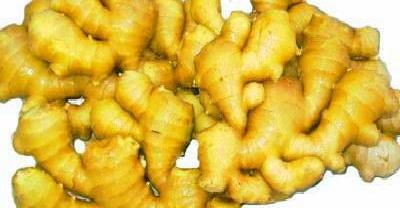
Annual planting Management of Sugar Orange
Sand sugar tangerine is an evergreen fruit tree, which has many times of life cycle, long fruit growth period, assimilation and flower bud differentiation in winter.
- Next
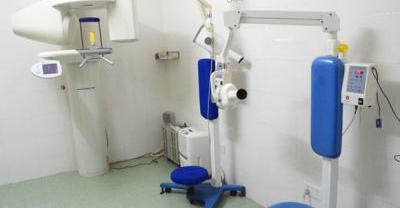
What is the magic of implant teeth?
A good tooth can not only satisfy people's appetite, but also related to everyone's quality of life and health. In recent years, a man named implant teeth.
Related
- Fuxing push coffee new agricultural production and marketing class: lack of small-scale processing plants
- Jujube rice field leisure farm deep ploughing Yilan for five years to create a space for organic food and play
- Nongyu Farm-A trial of organic papaya for brave women with advanced technology
- Four points for attention in the prevention and control of diseases and insect pests of edible fungi
- How to add nutrient solution to Edible Fungi
- Is there any good way to control edible fungus mites?
- Open Inoculation Technology of Edible Fungi
- Is there any clever way to use fertilizer for edible fungus in winter?
- What agents are used to kill the pathogens of edible fungi in the mushroom shed?
- Rapid drying of Edible Fungi

